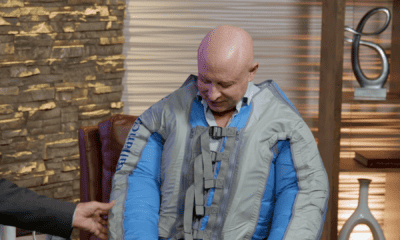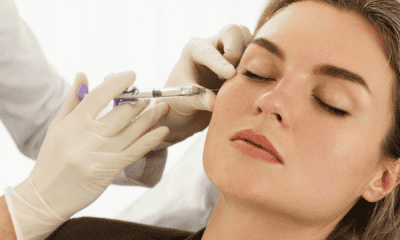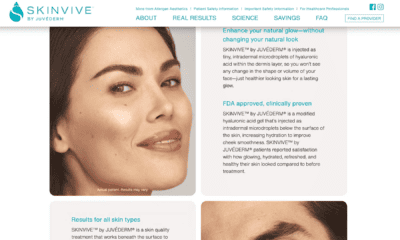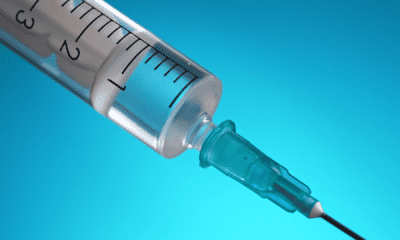Recovery time is hands down one of the most sought after questions for patients interesting in plastic surgery. They typically have already strongly considered a procedure based on legitimate desires, but at what cost will it come? Financial costs are one thing, but what about the time between the procedure and finalized results?
Board certified plastic surgeons Dr. Richard Baxter and Dr. James Namnoum discuss recovery with Dr. Brad Calobrace, speaking specifically to the idea that over-promising recovery almost undoubtedly leads to under-delivering.
A Fast, Effortless Recovery: The “Fake News” of Plastic Surgery
An important point before delving into possible recovery time is the severity of the procedure. There are many procedures that offer a very limited recovery, and in some cases, even no recovery. Procedures that fall into this category typically involve injections, like Botox and facial fillers, or non-surgical devices like MiraDry and CoolSculpting.
The reason why these procedures offer such short downtimes is an incredibly important piece of knowledge. “In general, the shorter the downtime, the less the long-term results,” explains Dr. Baxter, a board certified plastic surgeon in Seattle. “There are things that have very quick recovery – even no recovery – but they’re not going to do as much. You have to make sure the patients’ expectations about their results and about their recovery and their downtime match up.”
When it comes to surgical procedures, recovery time begins to escalate based on how extensive the procedure is. Surgeons who blanket-forecast the recovery for general procedures can lead to an over-promise and under-deliver situation.
“You know the definition of fake news in plastic surgery? ‘2 weeks, ma’am! 2 weeks!’,” shares Dr. Namnoum, a board certified plastic surgeon in Atlanta. “The bottom-line is, we’re all confronting this problem of trying to explain it patients. What we have to do is lead patients down a pathway that tells them in very concrete terms that it’s going to be probably a month or two months, or maybe even six months to a year before they will feel fully back to normal.”
What is Downtime Anyway?
Another part of properly explaining recovery time to patients is understanding the phases of downtime. Obviously every procedure is different, so the downtime will thus also be unique and dependent on many factors.
“There are two aspects two it,” says Dr. Baxter. “One is where you’re really just taking medications and need to be at home – you can’t be out and about. Then there’s social downtime where you’re recovered enough to get back to your regular activities but you may feel self-conscious about your appearance. You’re not at that final point of what your results are going to look like.”
These two aspects of downtime is critical to unpacking the nuance of recovery. Yes, a procedure may only require two weeks of “downtime.” That could mean many different things – maybe two weeks is just when swelling will go down, but not mild bruising. Maybe it means that a patient has healed enough to go on a walk, but not enough to bench press. And maybe it means that physically they will be out of the woods, but some minor appearance issues may keep patients in recovery psychologically.
Dr. Namnoum considers recovery in terms of the following:
- When can I return to driving carpool?
- When can I go into public and see my friends?
- When can I not be humiliated?
The answers are dependent on the procedure, as well as the skill of the surgeon, how seriously patients take post-op care, unforeseen complications, etc. Recovery is fluid and patients need to know this to prepare.
Modern Tools to Speed Recovery
There is no doubt that many procedures recover much faster than they used to. Breast augmentation in particular has a very fast turnaround, based on advances in technique. An experienced, skilled surgeon might have a breast augmentation out to dinner that night. While she may not be ready for the gym for some time, the phase to being hidden away at home to out and about has been shortened considerably.
Other procedures, like a tummy tuck, have also seen major improvements in technique and technology that significantly improves recovery. Many surgeons utilizing Exparel and drainless tummy tucks see their patients recover immediately after surgery far quicker than used to. This doesn’t necessarily alter how long until a patient is ready for squats and crunches, but it certainly has sped up the time between laid-up in bed and walking around the house.
These advances are technical and physical, but one tool that can be used across all procedures is helping patients to mentally recover. If a patient is confident and optimistic, they will not only follow their post-op instructions to the letter, but also potentially impact their physical recovery just through mental fortitude. On the other hand, a patient who wallows during recovery and is less inclined to follow post-op instructions as vigorously may take longer to heal.
Dr. Baxter describes this situation where some patients and/or physicians recommend a massage following body procedures. “Some people recommend lymphatic massage after liposuction or a tummy tuck. I don’t know if that really accelerates the recovery, but it certainly makes the patient feel like you’re engaging in that recovery process and helping them along.”
“There’s a sense of trust and well-being and health, and we’re trying to always convey that with the patients,” explains Dr. Namnoum. “I think what Richard said is absolutely apt – we’re trying to make them feel like they’re part of the recovery process. That might mean some self massage, or seeing someone who can do some light tissue massage, or their husband. Getting them engaged back into their body is very useful. It makes them feel like they’re at home.“


















Facebook
Twitter
Instagram
YouTube
RSS